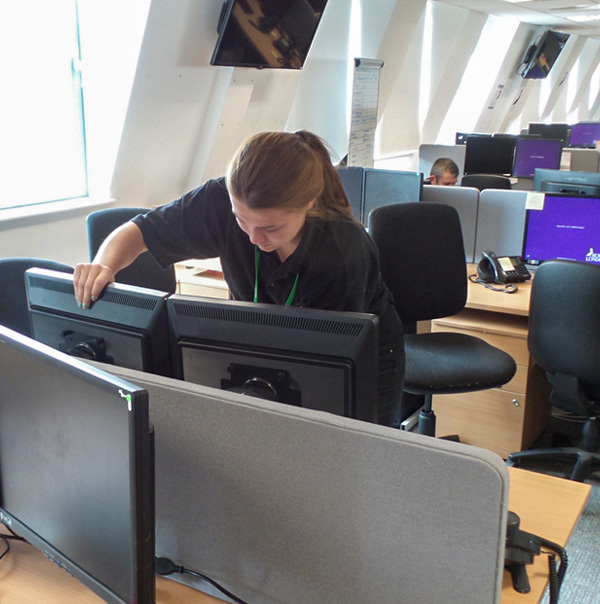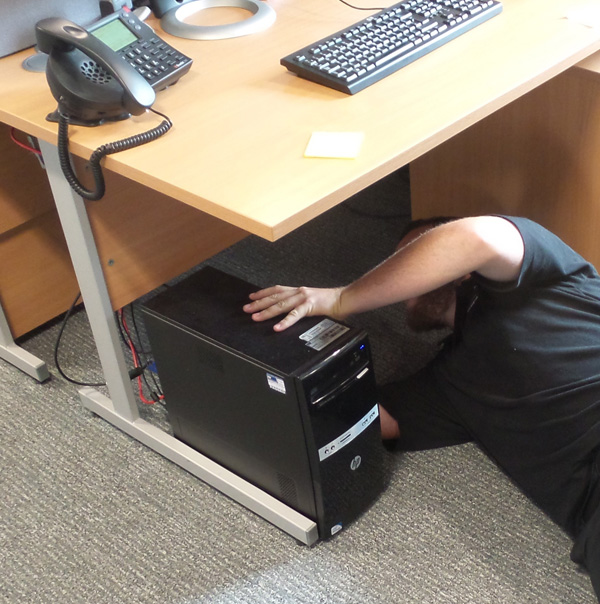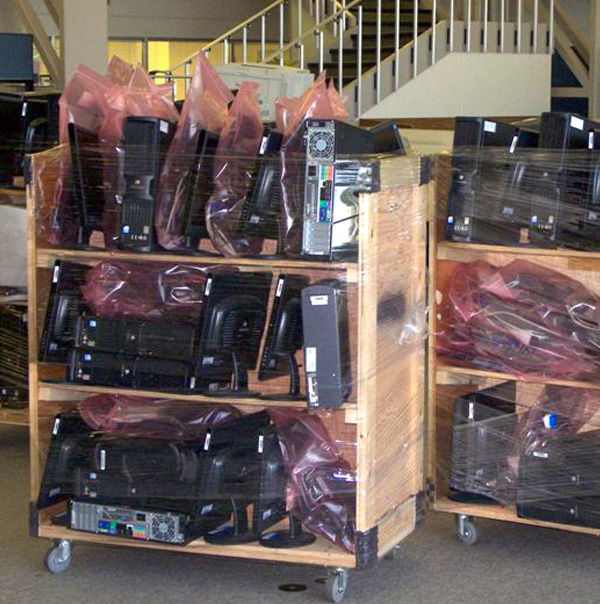Relocating a data center is no small feat. It involves meticulous planning, precise execution, and a reliable team of professionals to ensure that everything goes smoothly. At Valley Relocation and Storage, we understand the complexities involved in such a significant move. As a full-service moving company with extensive experience in commercial relocations, we are here to share our expertise to help you relocate your data center effectively.
Here are essential tips from our experts to make your data center move seamless and successful.
1. Start with a Comprehensive Plan
One of the most critical aspects of a successful data center relocation is thorough planning. Begin by creating a detailed plan that outlines every step of the move. This plan should include timelines, budgets, and a clear outline of responsibilities. Assign a dedicated project manager to oversee the entire process and ensure that all team members are aware of their roles and deadlines.
Clear delineation of responsibilities is crucial for keeping the relocation on track. Assign specific tasks to team members and ensure that everyone understands their role in the process. Regularly review progress against the plan and make adjustments as necessary to stay on schedule and within budget.
2. Conduct a Risk Assessment
Before initiating the move, perform a comprehensive risk assessment. Identify potential risks and develop strategies to mitigate them. This assessment should consider factors such as data security, equipment safety, and potential downtime. By anticipating and planning for these risks, you can minimize disruptions and ensure a smooth transition.
Risk assessment involves evaluating all aspects of the move that could potentially go wrong. For data security, consider the possibility of data breaches during the transition. Implement robust encryption and secure transfer protocols to protect sensitive information. For equipment safety, assess the risk of damage during packing, transport, and unpacking. Use high-quality packing materials and specialized equipment to minimize these risks.
Potential downtime is another critical risk factor. Analyze your operational requirements and develop contingency plans to minimize the impact of any interruptions. This may involve scheduling the move during off-peak hours or having backup systems in place to ensure continuous operation.
3. Inventory and Audit Your Equipment
Conduct a thorough inventory and audit of all your data center equipment. Document the condition of each item, and take note of any specific requirements for handling and transportation. This inventory will help you keep track of your assets and ensure that everything arrives safely at the new location.
In addition to basic inventory information, document any special handling or transportation requirements. Some equipment may require climate-controlled environments, anti-static packaging, or specialized handling procedures. Ensure that these requirements are clearly communicated to your moving team to prevent any damage or issues during the move.
4. Choose the Right Moving Partner
Selecting a reliable and experienced commercial moving company is crucial for a successful data center relocation. Valley Relocation and Storage offers specialized commercial relocation services in Sacramento and beyond. Our team of experts is equipped to handle the unique challenges of data center moves, ensuring that your equipment is transported safely and efficiently.
When evaluating potential moving partners, consider factors such as their experience, reputation, and the services they offer. Request references and reviews from past clients to gauge their performance. Additionally, inquire about their insurance coverage and guarantees to protect your assets during the move.
5. Develop a Detailed Floor Plan
Create a detailed floor plan for the new data center location. This plan should include the placement of all equipment, racks, and cabling. By having a clear layout, you can streamline the installation process and reduce the risk of errors. Ensure that the new space is adequately prepared to accommodate your equipment, with proper power and cooling infrastructure in place.
A detailed floor plan is essential for efficient setup at the new location. Begin by mapping out the physical layout of the space, including the dimensions and locations of key infrastructure elements such as power outlets, cooling systems, and network connections. Plan the placement of racks, servers, and other equipment to optimize space utilization and airflow.
Consider future expansion needs when designing the floor plan. Leave adequate space for additional equipment and ensure that the layout can accommodate changes without major disruptions. Label all components and connections in the floor plan to facilitate quick and accurate installation.
6. Back Up Your Data
Data loss can have catastrophic consequences for any business. Before the move, ensure that all critical data is backed up and stored securely. This step is essential to protect your information in case of any unforeseen issues during the relocation process. Consider using both on-site and off-site backup solutions for added security.
Test your backup systems thoroughly to ensure that data can be recovered quickly and accurately. Regularly update backups to include the most recent data and verify that all critical information is included. Consider using cloud-based backup solutions for added flexibility and security.
7. Coordinate with IT Professionals
Collaborate closely with your IT team throughout the relocation process. Their expertise is invaluable in ensuring that all systems are properly disconnected, transported, and reconnected. Work with them to develop a step-by-step plan for shutting down, packing, and reinstalling equipment. Clear communication with your IT professionals will help prevent any technical issues during the move.
IT professionals play a crucial role in the successful relocation of a data center. Involve them in the planning process from the beginning to ensure that all technical aspects are covered. Develop a detailed shutdown and startup plan that outlines the steps for safely powering down, packing, transporting, and reconnecting each piece of equipment.
Regularly communicate with your IT team to address any concerns or issues that arise during the move. Provide them with the necessary resources and support to carry out their tasks effectively. Clear and open communication will help prevent misunderstandings and ensure a smooth transition.
8. Label Everything
Proper labeling is essential for an organized and efficient move. Clearly label all equipment, cables, and components to ensure that everything is placed correctly at the new location. This labeling system should correspond with your detailed floor plan, making it easy for your team to set up the data center quickly and accurately.
Labeling is a simple but effective way to ensure an organized move. Use durable labels that are easy to read and resistant to wear and tear. Clearly mark all equipment, cables, and components with their designated locations according to the floor plan. This will help your team quickly identify and place items correctly during the setup process.
Consider using color-coded labels for different categories of equipment or connections. This can further streamline the installation process and reduce the risk of errors. Document the labeling system in your relocation plan and ensure that all team members are familiar with it.
9. Secure Sensitive Equipment
Data center equipment is often expensive and sensitive. To protect it during the move, use high-quality packing materials and secure transportation methods. Valley Relocation and Storage offers specialized packing and transportation services to ensure that your equipment is handled with care. Our commercial movers in Sacramento are trained to manage delicate and high-value items, providing you with peace of mind.
Valley Relocation and Storage employs specialized handling techniques and equipment to ensure the safe transport of sensitive data center components. Our team is trained in best practices for packing, loading, and unloading high-value items, ensuring that your equipment arrives in perfect condition.
10. Test Before and After the Move
Conduct thorough testing of all systems before and after the relocation. This testing will help identify any potential issues and ensure that everything is functioning correctly. Perform initial tests before shutting down the equipment and comprehensive tests once everything is set up at the new location. This step is crucial to minimize downtime and ensure a smooth transition.
Testing is a critical step in the relocation process. Before the move, conduct a full system test to ensure that all equipment is functioning correctly. Document the results and use them as a baseline for post-move testing. This will help you quickly identify any issues that arise during the relocation.
After the move, perform comprehensive testing of all systems to verify that everything is operating as expected. Test individual components as well as the overall system to ensure full functionality. Address any issues immediately to minimize downtime and prevent disruptions to your business operations.
11. Communicate with Stakeholders
Keep all stakeholders informed throughout the relocation process. Regular updates will help manage expectations and ensure that everyone is aware of the progress and any potential issues. This communication is particularly important for clients and customers who may be affected by the move. Clear and transparent communication will help maintain trust and confidence in your business.
Effective communication is essential for managing stakeholder expectations during a data center relocation. Develop a communication plan that outlines how and when updates will be provided to stakeholders. Regularly update them on the progress of the move and any potential issues that arise.
For clients and customers, provide clear information on how the move may impact them and what steps you are taking to minimize disruptions. Transparency and proactive communication will help maintain trust and confidence in your business during the relocation process.
12. Prepare for Potential Downtime
Despite your best efforts, some downtime is inevitable during a data center relocation. Prepare for this by scheduling the move during off-peak hours and informing all relevant parties in advance. Develop a contingency plan to manage any unexpected delays or issues, ensuring that your business operations can continue with minimal disruption.
13. Utilize Temporary Storage Solutions
In some cases, temporary storage may be necessary during the relocation process. Valley Relocation and Storage offers secure and flexible temporary commercial storage solutions in Sacramento. Our facilities are equipped to handle sensitive data center equipment, providing a safe space for your assets during the transition.
14. Optimize the New Data Center Setup
Take the opportunity to optimize the layout and configuration of your new data center. Consider implementing improvements such as better cable management, enhanced cooling systems, and more efficient power distribution. These optimizations can improve the overall performance and reliability of your data center, benefiting your business in the long run.
15. Review and Update Security Measures
Relocating your data center is an excellent time to review and update your security measures. Ensure that the new location has robust physical and digital security protocols in place. Implement measures such as access controls, surveillance systems, and cybersecurity protections to safeguard your data and equipment.
16. Coordinate with Facility Managers
If you are moving into a shared facility or data center, coordinate closely with the facility managers. Their knowledge and expertise can be invaluable in ensuring a smooth move. They can provide guidance on the best practices for setting up your equipment and integrating it into the existing infrastructure.
17. Consider Future Scalability
When setting up your new data center, consider your future growth needs. Design the layout and infrastructure with scalability in mind, allowing for easy expansion as your business grows. This foresight can save you time and money in the future, making it easier to accommodate increased demand.
18. Evaluate and Learn from the Move
After the relocation is complete, take the time to evaluate the process and identify any areas for improvement. Gather feedback from your team and stakeholders to learn from the experience. This evaluation will help you refine your processes and be better prepared for any future relocations.
Relocating a data center is a complex and challenging task, but with careful planning and the right expertise, it can be done smoothly and efficiently. Valley Relocation and Storage is here to support you every step of the way. Our commercial relocation services in Sacramento are designed to meet the unique needs of data center moves, providing you with the peace of mind that your equipment and data are in safe hands.
By following these tips and working with a trusted commercial moving company, you can ensure a successful data center relocation that minimizes downtime and disruption to your business. Contact Valley Relocation and Storage today to learn more about our comprehensive moving and storage solutions and how we can assist with your next data center move. Let us help you make your relocation a success!






